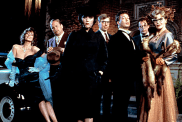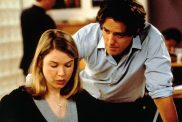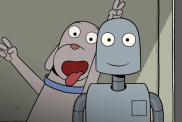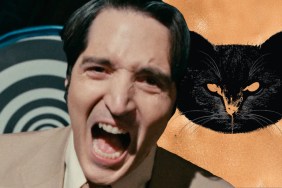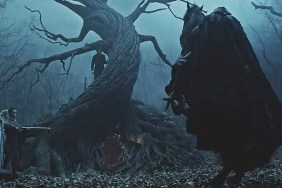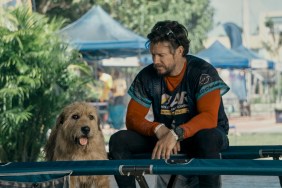Writer Jessica Ferri takes on the undisputed King of Horror before this summer’s new adaptation of “IT” hits the screen. Read on…
RELATED: The 10 Best Stephen King Movies
By now the anecdote about Stephen King’s father leaving the family home to get a pack of cigarettes and never returning when King was a child is solidly embedded in King mythology—the genesis of King’s twisted imagination, stemming from a major childhood trauma. In an interview, King said that writing became his “kind of psychological protection.”
“It’s like drawing a magic circle around my family and myself,” he said. “My mother always used to say, ‘If you think the worst, it can’t come true.’ I know that’s superstition, but I’ve always believed that if you think the very worst, then no matter how bad things get (and in my heart I’ve always been convinced that they can get pretty bad) they’ll never get as bad as that.”

The very idea of the boogeyman under the bed is a way for children to deal with their anxieties about the unknown: the dark, what happens in our dreams, will mom and dad come home from work. And it’s easy to argue that Stephen King is the creator of one of the most infamous modern day monsters—Pennywise the Clown, from his 1986 novel “IT.”
The new feature film adaptation of IT, slated to be released in September, has teased horror fans and King aficionados with two pretty terrifying trailers. Though the original TV mini-series from 1990 starring Tim Curry is plenty scary, there are always naysayers who claim there’s no way a movie could capture the breadth of terror that lies in King’s novels. This is a fair argument.

Though for the most part King has been a fan of his movie adaptations (in particular of Stand By Me, which he said was “true to the book”), die-hard Stephen King fans are quick to shoot down The Shining. Its official title, which King will remind you, is “Stanley Kubrick’s The Shining”—meaning that the film is different enough from the novel to warrant a change in creative ownership. But even The Shining, though controversial, belongs in the category of wildly successful, highly effective horror movies based on Stephen King novels.
Right off the page, King’s writing practically screams for dramatic treatment. For one thing, King is the master of dialogue. He really understands how people speak, and commits dialogue to the page seamlessly—in some of his books, there are hundreds of pages of straight dialogue, almost as if a screenplay already existed. And it’s effective chatter, too. Take a novel like “Dolores Clairborne.” The entire book is narrated through the main character’s spoken monologue.

It’s no surprise, then, that King himself wrote the screenplay for my personal favorite of his movie adaptations, Pet Sematary. Directed by Mary Lambert and released in 1989, Pet Sematary is one of King’s finest novels, and the movie version is still one of the scariest films ever made. King got the idea for the book when the family cat was run over in 1978 while King was teaching at his alma mater, the University of Maine at Orono. King’s children, Naomi and Owen, were understandably upset over what had happened to their beloved pet, and the issue raised some serious questions over life and death and what the hell to tell your kids about it.
Of course, King takes it one step further than a simple fear of death—in Pet Sematary, the unimaginable happens, as Louis’s son Gage is struck and killed by a truck. Conveniently, there’s the adjacent “Pet Sematary,” or ancient Indian burial ground, where Louis knows he can bury Gage, and he’ll come back—not quite right—but alive, nonetheless.

King insisted that Pet Sematary be filmed in Maine, at Mount Hope Cemetery. The location, combined with Lambert’s direction, Peter Stein’s cinematography, Fred Gwynn’s turn as Jud the neighbor (who most will recognize as Herman Munster), and little three-year-old Miko Hughes as the creepy, scalpel-wielding toddler, all combine in wonderful ways to make Pet Sematary just plain terrifying. Throw in Dave Anderson’s grisly makeup effects on the ghostly Victor Pascow, the dead jogger, who tries to warn Louis about the burial ground despite lying on a hospital gurney, his brain leaking out of his cracked skull, and you’ve got images seared into your memory for good.
Pet Sematary also includes a big chunk of the family’s backstory that other King adaptations skip over for time constraints or other stupid reasons. As Louis’s wife, Rachel, is racing back to him (and, though she doesn’t know it, the monstrous Gage), she has flashbacks to the long, wasting illness and subsequent death of her sister, Zelda. Other screenwriters might have left out these elements, thinking, “We’ve got enough horror to fuel this film, we don’t need scenes of Rachel’s sister suffering from spinal meningitis and moaning for help in the back bedroom as adult Rachel cowers from the memory.”

But because the screenwriter in this instance is King himself, he knows how important the Zelda subplot is to Pet Sematary as a whole—that the moral of the story is our fear of death, our inability to accept it, to confront it and face it, and the guilt that surrounds that avoidance. Those feelings of guilt and denial (and looking for someone to blame) are what get Louis and his family into this horrific mess.
Anxiety is the most mundane form of horror. We all experience it, in varying degrees, in our daily lives. King’s work reflects all the different forms it can take: fitting in, self-actualization (Carrie), family dynamics (The Shining), when our childhood fears come back to haunt us (IT), or past abuses resurface (Dolores Claiborne). We fear being victimized by random, ruthless violence (Misery, Cujo, Gerald’s Game). We experience creative anxiety, for King, which most often takes the form of writer’s block (Bag of Bones, Lisey’s Story). And ultimately, in the end, even when things are settled we wonder what could have been (11/22/63).

This anxiety over the unknown, which is, at its heart, just an anxiety over the finality of death, is present in every single Stephen King novel. It’s not surprising that the movie adaptations that understand this are the most successful King adaptations. “Monsters are real, and ghosts are real too,” King writes in “The Shining.” “They live inside us, and sometimes, they win.” The interesting part about this quotation is not that the monsters or real, or that sometimes they triumph. The fascinating part is that they are monsters of our own creation—anxiety over what scares us most—that kind of creeping sensation that comes and goes throughout the day.
Like a surgeon, King can extract that little gnawing bad feeling that doesn’t go away, and turn it into a whole funhouse of what scares us most. And that’s what makes him the master of horror.
READ MORE IN JESSICA FERRI’S “ON” SERIES…
Stepford Whites: On Get Out and the Social Thriller
My Body, My Choice: On Demonic Possession
Merry X-Mas: On Holiday Horror
